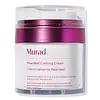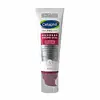What's inside
What's inside
 Key Ingredients
Key Ingredients

 Benefits
Benefits

 Concerns
Concerns

 Ingredients Side-by-side
Ingredients Side-by-side

Water
Skin ConditioningCaprylic/Capric Triglyceride
MaskingGlycerin
HumectantGlyceryl Behenate
EmollientVitis Vinifera Seed Oil
EmollientBehenyl Alcohol
EmollientLecithin
EmollientHouttuynia Cordata Extract
Skin ConditioningCeramide NP
Skin ConditioningPhaeodactylum Tricornutum Extract
HumectantUrea
BufferingYeast Amino Acids
HumectantTrehalose
HumectantInositol
HumectantTaurine
BufferingBetaine
HumectantLactobacillus Ferment
Skin ConditioningHelianthus Annuus Seed Oil
EmollientHydroxyacetophenone
AntioxidantTocopherol
AntioxidantEthylhexylglycerin
Skin ConditioningPropanediol
SolventSodium Acrylates Copolymer
Xanthan Gum
EmulsifyingCitric Acid
BufferingLeuconostoc/Radish Root Ferment Filtrate
AntimicrobialChlorphenesin
AntimicrobialDehydroacetic Acid
PreservativeSodium Benzoate
MaskingWater, Caprylic/Capric Triglyceride, Glycerin, Glyceryl Behenate, Vitis Vinifera Seed Oil, Behenyl Alcohol, Lecithin, Houttuynia Cordata Extract, Ceramide NP, Phaeodactylum Tricornutum Extract, Urea, Yeast Amino Acids, Trehalose, Inositol, Taurine, Betaine, Lactobacillus Ferment, Helianthus Annuus Seed Oil, Hydroxyacetophenone, Tocopherol, Ethylhexylglycerin, Propanediol, Sodium Acrylates Copolymer, Xanthan Gum, Citric Acid, Leuconostoc/Radish Root Ferment Filtrate, Chlorphenesin, Dehydroacetic Acid, Sodium Benzoate
Water
Skin ConditioningCaprylic/Capric Triglyceride
MaskingGlycerin
HumectantPropanediol
SolventPentylene Glycol
Skin ConditioningHelianthus Annuus Seed Oil
EmollientSorbitol
HumectantDimethicone
EmollientButyrospermum Parkii Butter
Skin ConditioningCetearyl Alcohol
EmollientBehenyl Alcohol
EmollientGlyceryl Stearate
EmollientTocopheryl Acetate
AntioxidantAcrylates/C10-30 Alkyl Acrylate Crosspolymer
Emulsion StabilisingAllantoin
Skin ConditioningBHT
AntioxidantCaffeine
Skin ConditioningCaprylyl Glycol
EmollientCeramide NP
Skin ConditioningCeteareth-20
CleansingCetyl Alcohol
EmollientCitric Acid
BufferingDipotassium Glycyrrhizate
HumectantDisodium EDTA
Disodium Ethylene Dicocamide PEG-15 Disulfate
CleansingGlyceryl Stearate Citrate
EmollientNiacinamide
SmoothingPanthenol
Skin ConditioningSodium Hyaluronate
HumectantSodium Hydroxide
BufferingXanthan Gum
EmulsifyingWater, Caprylic/Capric Triglyceride, Glycerin, Propanediol, Pentylene Glycol, Helianthus Annuus Seed Oil, Sorbitol, Dimethicone, Butyrospermum Parkii Butter, Cetearyl Alcohol, Behenyl Alcohol, Glyceryl Stearate, Tocopheryl Acetate, Acrylates/C10-30 Alkyl Acrylate Crosspolymer, Allantoin, BHT, Caffeine, Caprylyl Glycol, Ceramide NP, Ceteareth-20, Cetyl Alcohol, Citric Acid, Dipotassium Glycyrrhizate, Disodium EDTA, Disodium Ethylene Dicocamide PEG-15 Disulfate, Glyceryl Stearate Citrate, Niacinamide, Panthenol, Sodium Hyaluronate, Sodium Hydroxide, Xanthan Gum
Ingredients Explained
These ingredients are found in both products.
Ingredients higher up in an ingredient list are typically present in a larger amount.
Behenyl Alcohol is a type of fatty alcohol (these are different from the drying, solvent alcohols).
Fatty Alcohols have hydrating properties and are most often used as an emollient or to thicken a product. They are usually derived from natural fats and oils; behenyl alcohol is derived from the fats of vegetable oils.
Emollients help keep your skin soft and hydrated by creating a film that traps moisture in.
In 2000, Behenyl Alcohol was approved by the US as medicine to reduce the duration of cold sores.
Learn more about Behenyl AlcoholThis ingredient is an emollient, solvent, and texture enhancer. It is considered a skin-softener by helping the skin prevent moisture loss.
It helps thicken a product's formula and makes it easier to spread by dissolving clumping compounds.
Caprylic Triglyceride is made by combining glycerin with coconut oil, forming a clear liquid.
While there is an assumption Caprylic Triglyceride can clog pores due to it being derived from coconut oil, there is no research supporting this.
Learn more about Caprylic/Capric TriglycerideCeramide NP is a type of ceramide and formally known as ceramide 3.
Ceramides are intercellular lipids naturally found in our skin that bonds dead skin cells together to create a barrier. They are known for their ability to hold water and thus are a great ingredient for dry skin.
Ceramides are an important building block for our skin barrier. A stronger barrier helps the skin look more firm and hydrated. By bolstering the skin ceramides act as a barrier against irritating ingredients. This can help with inflammation as well.
If you would like to eat ceramides, sweet potatoes contain a small amount.
Read more about other common types of ceramides here:
Ceramide AP
Ceramide EOP
Citric Acid is an alpha hydroxy acid (AHA) naturally found in citrus fruits like oranges, lemons, and limes.
Like other AHAs, citric acid can exfoliate skin by breaking down the bonds that hold dead skin cells together. This helps reveal smoother and brighter skin underneath.
However, this exfoliating effect only happens at high concentrations (20%) which can be hard to find in cosmetic products.
Due to this, citric acid is usually included in small amounts as a pH adjuster. This helps keep products slightly more acidic and compatible with skin's natural pH.
In skincare formulas, citric acid can:
While it can provide some skin benefits, research shows lactic acid and glycolic acid are generally more effective and less irritating exfoliants.
Most citric acid used in skincare today is made by fermenting sugars (usually from molasses). This synthetic version is identical to the natural citrus form but easier to stabilize and use in formulations.
Read more about some other popular AHA's here:
Learn more about Citric AcidGlycerin is already naturally found in your skin. It helps moisturize and protect your skin.
A study from 2016 found glycerin to be more effective as a humectant than AHAs and hyaluronic acid.
As a humectant, it helps the skin stay hydrated by pulling moisture to your skin. The low molecular weight of glycerin allows it to pull moisture into the deeper layers of your skin.
Hydrated skin improves your skin barrier; Your skin barrier helps protect against irritants and bacteria.
Glycerin has also been found to have antimicrobial and antiviral properties. Due to these properties, glycerin is often used in wound and burn treatments.
In cosmetics, glycerin is usually derived from plants such as soybean or palm. However, it can also be sourced from animals, such as tallow or animal fat.
This ingredient is organic, colorless, odorless, and non-toxic.
Glycerin is the name for this ingredient in American English. British English uses Glycerol/Glycerine.
Learn more about GlycerinHelianthus Annuus Seed Oil is the oil derived from the seeds of a Sunflower. Sunflower seed oil is non-fragrant. It is an emollient, meaning it helps to soften the skin.
Sunflower seed oil contains many fatty acids. The fatty acids found in sunflower seeds include (from highest amount to least): linoleic acid, myristic acid, palmitic acid, stearic acid, arachidic acid, oleic acid, and linolenic acid.
These fatty acids help the skin create ceramides. Ceramides play a role in repairing the skin barrier.
Helianthus Annuus Seed Oil helps moisturize the skin. This in turn helps the skin look more rejuvenated and smoother.
Sunflowers are rich in vitamin E.
Historians believe Indigenous cultures of North America domesticated sunflowers before corn. Thus they relied on sunflower oil for a variety of uses. One such use is moisturizing skin and hair.
Sunflower seed oil may not be fungal acne safe. We recommend speaking with a professional if you have any concerns.
Learn more about Helianthus Annuus Seed OilPropanediol is an all-star ingredient. It softens, hydrates, and smooths the skin.
It’s often used to:
Propanediol is not likely to cause sensitivity and considered safe to use. It is derived from corn or petroleum with a clear color and no scent.
Learn more about PropanediolWater. It's the most common cosmetic ingredient of all. You'll usually see it at the top of ingredient lists, meaning that it makes up the largest part of the product.
So why is it so popular? Water most often acts as a solvent - this means that it helps dissolve other ingredients into the formulation.
You'll also recognize water as that liquid we all need to stay alive. If you see this, drink a glass of water. Stay hydrated!
Learn more about WaterXanthan gum is used as a stabilizer and thickener within cosmetic products. It helps give products a sticky, thick feeling - preventing them from being too runny.
On the technical side of things, xanthan gum is a polysaccharide - a combination consisting of multiple sugar molecules bonded together.
Xanthan gum is a pretty common and great ingredient. It is a natural, non-toxic, non-irritating ingredient that is also commonly used in food products.
Learn more about Xanthan Gum